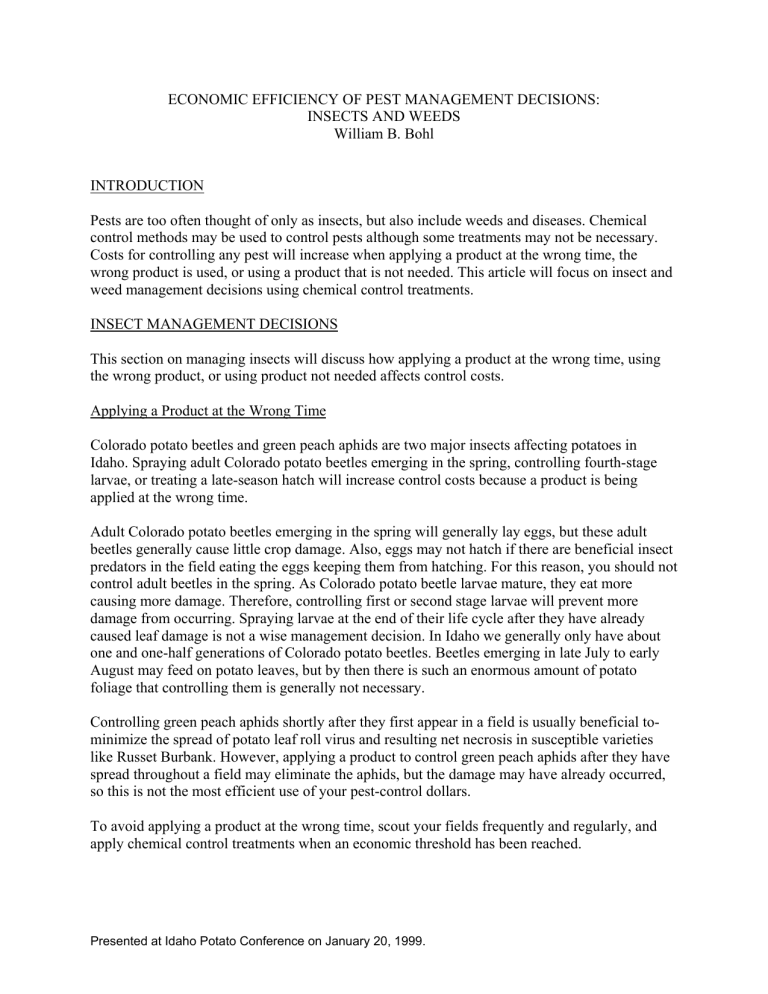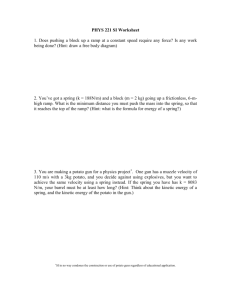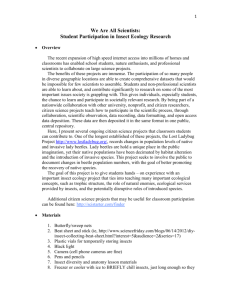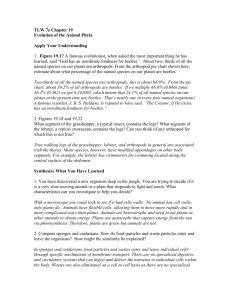Economic Efficiency of Pest Management Decisions

ECONOMIC EFFICIENCY OF PEST MANAGEMENT DECISIONS:
INSECTS AND WEEDS
William B. Bohl
INTRODUCTION
Pests are too often thought of only as insects, but also include weeds and diseases. Chemical control methods may be used to control pests although some treatments may not be necessary.
Costs for controlling any pest will increase when applying a product at the wrong time, the wrong product is used, or using a product that is not needed. This article will focus on insect and weed management decisions using chemical control treatments.
INSECT MANAGEMENT DECISIONS
This section on managing insects will discuss how applying a product at the wrong time, using the wrong product, or using product not needed affects control costs.
Applying a Product at the Wrong Time
Colorado potato beetles and green peach aphids are two major insects affecting potatoes in
Idaho. Spraying adult Colorado potato beetles emerging in the spring, controlling fourth-stage larvae, or treating a late-season hatch will increase control costs because a product is being applied at the wrong time.
Adult Colorado potato beetles emerging in the spring will generally lay eggs, but these adult beetles generally cause little crop damage. Also, eggs may not hatch if there are beneficial insect predators in the field eating the eggs keeping them from hatching. For this reason, you should not control adult beetles in the spring. As Colorado potato beetle larvae mature, they eat more causing more damage. Therefore, controlling first or second stage larvae will prevent more damage from occurring. Spraying larvae at the end of their life cycle after they have already caused leaf damage is not a wise management decision. In Idaho we generally only have about one and one-half generations of Colorado potato beetles. Beetles emerging in late July to early
August may feed on potato leaves, but by then there is such an enormous amount of potato foliage that controlling them is generally not necessary.
Controlling green peach aphids shortly after they first appear in a field is usually beneficial tominimize the spread of potato leaf roll virus and resulting net necrosis in susceptible varieties like Russet Burbank. However, applying a product to control green peach aphids after they have spread throughout a field may eliminate the aphids, but the damage may have already occurred, so this is not the most efficient use of your pest-control dollars.
To avoid applying a product at the wrong time, scout your fields frequently and regularly, and apply chemical control treatments when an economic threshold has been reached.
Presented at Idaho Potato Conference on January 20, 1999.
Using the Wrong Product
Using chemicals to control insects that have developed resistance to selected compounds is not economical. There are local areas of Colorado potato beetles in Idaho that have developed resistance to some chemicals. Producers should test for developing resistance in Colorado potato beetles by using test kits developed by the University of Idaho. These test kits use a discriminating chemical dose to indicate if a beetle population is developing resistance. If the test indicates resistance is developing, it does not necessarily mean a particular chemical will not be effective when used at full-labeled field rates. Also, to avoid or delay resistance, rotate the chemical class used to control the insect. Look at the active ingredient and find out the mode of action. Products with different trade names may be the same chemical.
Preplant chemicals can be effective and beneficial in some fields; however, using a preplant chemical in all fields may not be necessary. If you are unfamiliar with a field or have always used a preplant insecticide, leave test strips to determine the need for preplant treatments. If a preplant chemical proves beneficial, you should be able to treat the insect that may later develop in the test areas.
Using a Product Not Needed
The most likely situation where a chemical control treatment is used but not needed is when an insect is misidentified. This most likely happens when one of several other aphid species is misidentified as green peach aphids. To avoid using a product not needed, be sure to positively identify the target insect before applying a chemical control.
Using a product that is not needed may also occur when beneficial insects are overlooked, or not identified. For example, two-spotted collops beetles feed on aphids and Colorado potato beetle eggs. Using a chemical control may not be necessary if beneficial insects are present in large enough numbers. Be sure to look for beneficial insects as well as damaging insects when scouting fields.
Cost Scenarios
Using a product to control insects that costs $10.00 per acre without application costs may not appear to be much, but multiply that by 400 acres and the total cost is $4,000. If you needed the product, then it is likely a good decision to spend the money, but if it was not needed, then it was money not well spent.
Consider a more expensive chemical treatment at $54.00 per acre. Multiply this by 400 acres and the bill is $21,600. Again, this is money appropriately spent if the product was needed, but not a good management decision if the product was unnecessary.
WEED MANAGEMENT DECISIONS
Weed management decisions may be more difficult to make than insect management decisions because deciding to control some weeds needs to be made before the weeds emerge. Cultivating,
Presented at Idaho Potato Conference on January 20, 1999.
followed by using one application of a two-way herbicide mixture may control low weed populations. Whereas, high weed populations may require applying a three-way herbicide mixture followed by another single herbicide application. The cost difference for the chemicals may be significant.
To have an economical and effective weed management program, you need to know the history of weed problems in every field and keep a written record. Use these written records to develop weed management plans for each field. It is unlikely the same weed control strategies will be equally effective in every field. Consequently, you should develop weed management plans on a prescription basis for individual fields, and in some cases areas within a field.
Cost Scenario
Assume a product costs $43.50 per acre without application costs and is used on 400 acres of potatoes, but is actually only needed on half the acres. An alternate product could have successfully controlled the weeds with a cost of $27.50 per acre, again without considering application costs. This is a difference of $16.00 per acre ($43.50 - $27.50). Using, the appropriate control treatments on all the acres would have saved $3,200 ($16.00 x 200).
Presented at Idaho Potato Conference on January 20, 1999.






